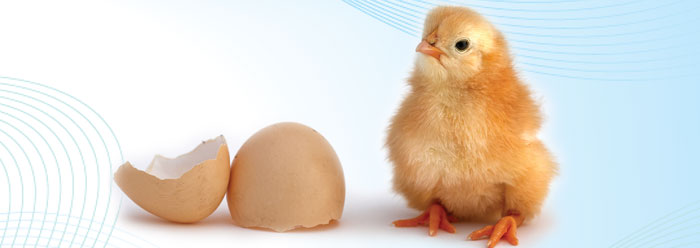This age-old question really has a simple answer. Attempts to answer it, however, and attempts to get around implications of the simple answer are often quite convoluted.
According to the Creator of chickens, and the author of the Record of their origins, chickens came first. It was on the Fifth Day of Creation Week that He created "every winged fowl after [their] kind" (Genesis 1:21) complete with the DNA to reproduce that kind. Then He "blessed them, saying, Be fruitful, and multiply" (v.22) using that DNA. For the chickens this meant lay chicken eggs. Problem solved.
Chickens are amazingly complex creatures, with their hollow bones, intricate feathers, four-chambered heart, continuous air intake, high metabolism, complex brain, good hearing, superb color vision, etc. Modern domestic chickens aren't very good flyers, having been bred to stay home, but neither were the recently wild forefathers of chickens from which they were bred. Everything about a chicken suggests careful design.
Even a chicken's egg is well designed. The embryo nestles safely inside, surrounded and cushioned by amniotic fluid and nourished by the yolk. Metabolic wastes are insulated from the rest, while oxygen and carbon dioxide are exchanged across the hard but porous shell.
A healthy female chicken produces just such a system nearly once a day, and can even preserve male sperm inside her body to continue fertilizing eggs for several days after mating. The creationist can clearly see the Creator's hand in each feature, phase, and function of both chicken and egg.
The evolutionist has a different story to tell, however. To them, chickens evolved from other kinds of birds, although which ones remains unclear. It wasn't flightless birds which gave rise to chickens, because they are thought to have descended from birds which could fly but lost that ability through mutation. Actually, the origin of all types of birds which live today are shrouded in mystery leading bird expert, Alan Feduccia, to proclaim, "The origin of birds is still up in the air."
It's fashionable today to claim that birds evolved from dinosaurs, although again, there is little agreement on which dinosaur lineage was ancestral to birds. The claim persists in spite of the fact that birds and dinosaurs differ markedly. Legs must become wings and scales must become feathers. Dinosaurs had solid bones, yet bird bones are hollow. Reptilian dinosaurs were likely cold blooded while birds are warm blooded with an extremely high metabolism. Dinosaurs had lungs similar to mammals, while the bird's breathing scheme is totally different. At least dinosaur eggs were similar to birds eggs internally. Externally, they had a soft, leathery shell quite different from bird's eggs.
All of these changes are thought to have been accomplished by acquiring new genetic information through random mutation. Did the mutations occur in the adult progenitor of chickens or in its eggs? There is no evidence of either.
A more interesting question arises. Which came first—the commitment to naturalistic evolution and the necessity that animals arose from different animals, or the data to support it?














